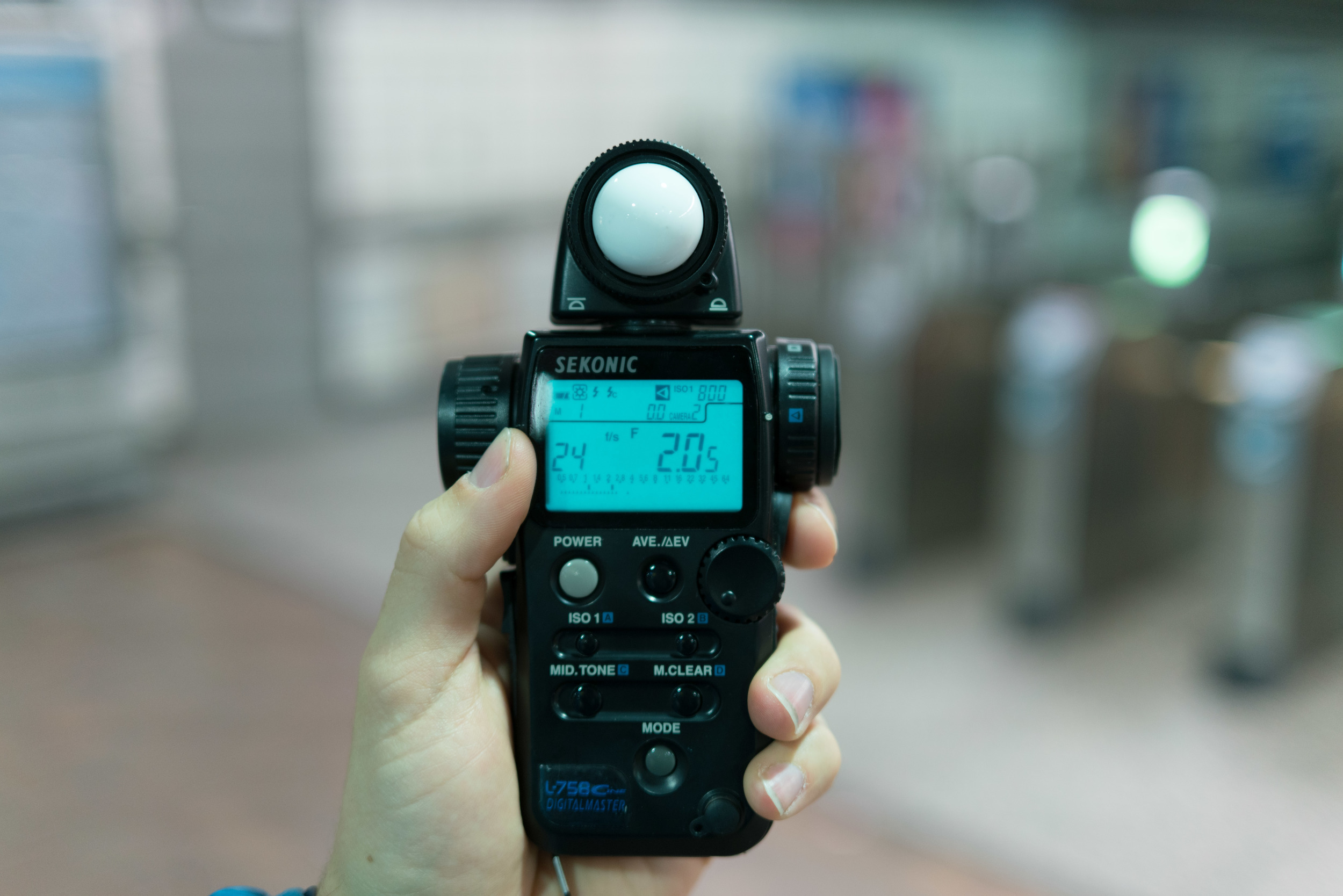Everything below was shot on a Sony A7rii with a Loxia 35mm F2 lens. Unless otherwise noted, all photos have only been adjusted for lens corrections.
I purchased a light meter, a Sekonic L-758Cine to be specific.
I've had it for about a month but I hadn't gotten the chance to use it due to work. Thursday I headed to downtown to get some footage for my marriage video and I took the meter with me.
ISO 800 | F 2.8 | 1/50 second
Left: general enviornment
Right: hot spot in deep frame
The reason I bought the meter is because I shoot mainly video. On my A7rii I shoot primarily in a log setting called SLog, which helps when grading the video in post. SLog is very unsharp, unsaturated, and low contrast. Thus it is hard to tell exposure. There have been a couple critical shots that I have missed due to SLog exposure and I wanted to make sure that won't happen again. So I bought a meter so I could learn exactly how SLog is working.
SLog2
SLog2 graded in DaVinci Resolve
In working on movies, I am surprised how often light meters are used these days. Generally most DPs I work for use them to set the initial T stop before any monitors get up. But I have noticed a trend, the DPs who shot the most beautiful work are the ones who go by their meter, not the monitor.
ISO 800 | F 3.2 | 1/50 second
General Environment
When shooting in the dark subway I immediately noticed that I like to underexpose by about a stop or so.
ISO 800 | F 2.5 | 1/50 second
For example with this picture of this Lexus, based on my tastes I think it looks best at F 2.5.
But the meter said...
F 1.4 split.
But a F 1.4 split, as you can see below, looks much too overexposed.
ISO 1000 | F 2.0 | 1/50 second
With photography, everything is all personal preference. I generally prefer underexposing when it is dark out.
ISO 100 | F 6.3 | 1/50 second
When it is daytime I have learned that I like overexposing by a 1/3 to a 1/2 a stop. In the picture above I went 3/4 to a full stop over (which was probably a little too much).
In the daylight I enjoy it when my highlights roll off, as you can see in the bridge in the upper left. Overexposing also helps to lower contrast, which is a look I often go for.
Carry around this light meter that is about the size of my actually camera has once again reinforced the idea of slowing down when shooting. Using a light meter is less about nailing the perfect exposure and more about realizing what I am doing. Because these days you pretty much just have to get within two stops over or under and you can fix it in post. The perfect exposure is unnecessary in photography thank to 16 bit uncompressed RAW photos.
Unfortunately that is not the case for video. This light meter has earned a place in my pelican and I will be using it from here on out to explore SLog.
All photos below have been processed
For more of my photography visit my flickr:



















